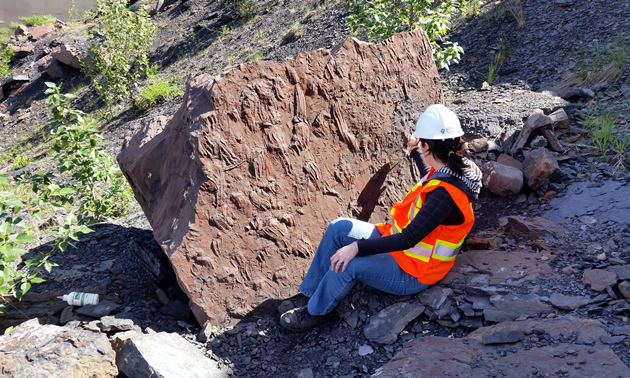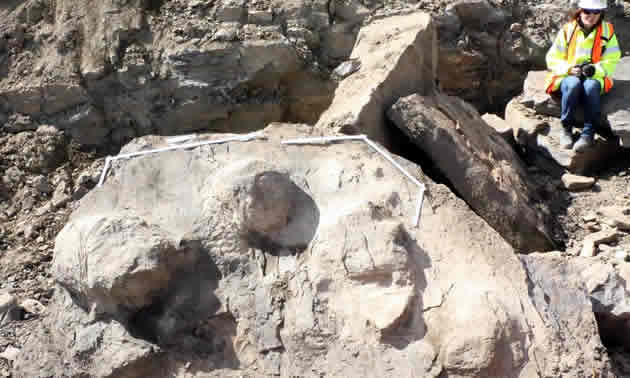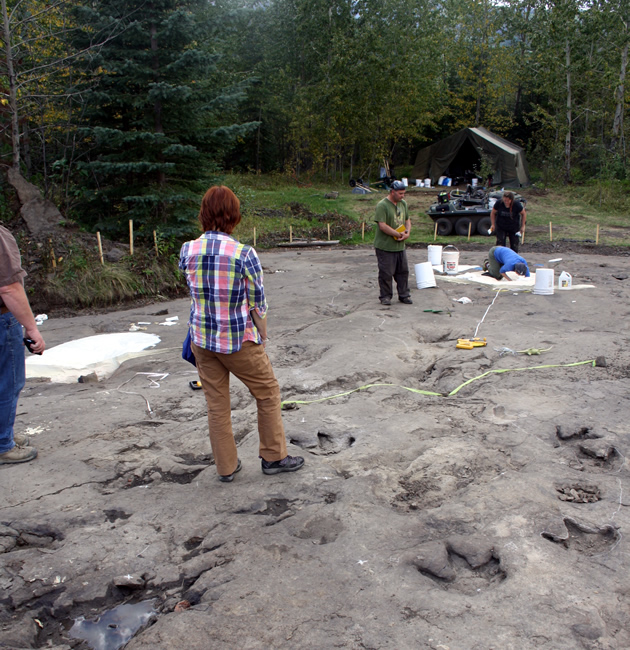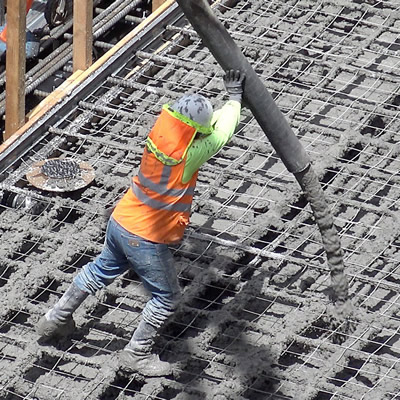British Columbia’s new fossil protocol
The change is a win for both collectors and companies

Crocodile swim-tracks on a large slab were reported by a worker from the Quintette coal mine near Tumbler Ridge, B.C. The slab was recovered with help of the mine personnel and now resides in a local museum. — Rich McCrea photo
Fossils are the kind of treasure most energy companies aren’t looking for. When they turn up, however, every company needs to know the proper procedures to follow to ensure the safe removal and transport of the artifact. These prehistoric specimens can easily be damaged by development, be sold into private hands or be sent to major institutions outside the province.
“We have been working on implementing a fossil management framework since 2011, following some changes to the Land Act to strengthen the ability of the ministry to manage fossil resources,” said Elisabeth Déom, senior stewardship officer of the Heritage Branch of British Columbia’s Ministry of Forests, Lands, Natural Resource Operations and Rural Development.
“We then received government direction in 2017. Now, the rules, procedures, policy and requirements apply across the natural resource ministries and industries,” said Déom. “We are quite excited to have that consistent process, and as a result we have really needed tools for industry to use as resources.”
The new policy and approach
The most important change that has been made is the requirement to assess impact ahead of receiving authorization and starting construction. The rules and procedures now apply across the natural resource sector, creating a consistent and coherent process.

Meikle-dinosaur tracks and an ankylosaur footprint were unearthed in B.C.’s Tumbler Ridge area. — Pattern Development photo
Any fossils discovered must now be reported to the province’s Heritage Branch, which will then decide the correct procedure to follow in terms of removal and relocation.
The ministry performed a case study of Crown land industry usage over several years and uncovered the need for improved clarity across the province in terms of fossil recovery. The Heritage Branch continues to implement and seek direction from government to apply one set of regulations across all sectors.
The new rules are in place to protect the province’s important palaeontological heritage: dinosaurs and dinosaur tracks, five-hundred-million-year-old trilobite fossils, prehistoric marine reptiles, Quaternary Period-animals (like bison, elk and mammoth), and shells and other ancient marine environment fossils. These treasures are constantly being uncovered province-wide.
Industry impact
The oil and gas industry in B.C. now has a fossil management process similar to the one in Alberta. Companies that have been working in Alberta and simultaneously in B.C. will now have an easier time following the consistent protocol.
The Heritage Branch’s website has been updated with a number of tools: a map of important fossil areas in B.C. for general public use; and a database of mapped fossil sites that industry-authorized users can access to help assess their potential impact on the resource when they apply for uses on Crown land. The database map allows users to determine if they are going to potentially work in a high fossil area or if it's outside of one. If they are outside of one, the branch requires them to develop a chance find protocol so they are prepared in advance.
Industry personnel are welcoming the consistency and transparency of the new approach across the province. For more information about the new requirements for fossil finds in B.C., visit the ministry’s website.

Dinosaur footprints were discovered at the 6 Peaks trackway site in northeast British Columbia. — Photo courtesy Paleontology Heritage Branch




